

William Stopford
2026 Audi Q6 and SQ6 Sportback price and specs
2 Hours Ago
Toyota's new Prado is selling well, but does it still deserve to be the large SUV segment leader now that all the hype has died down?
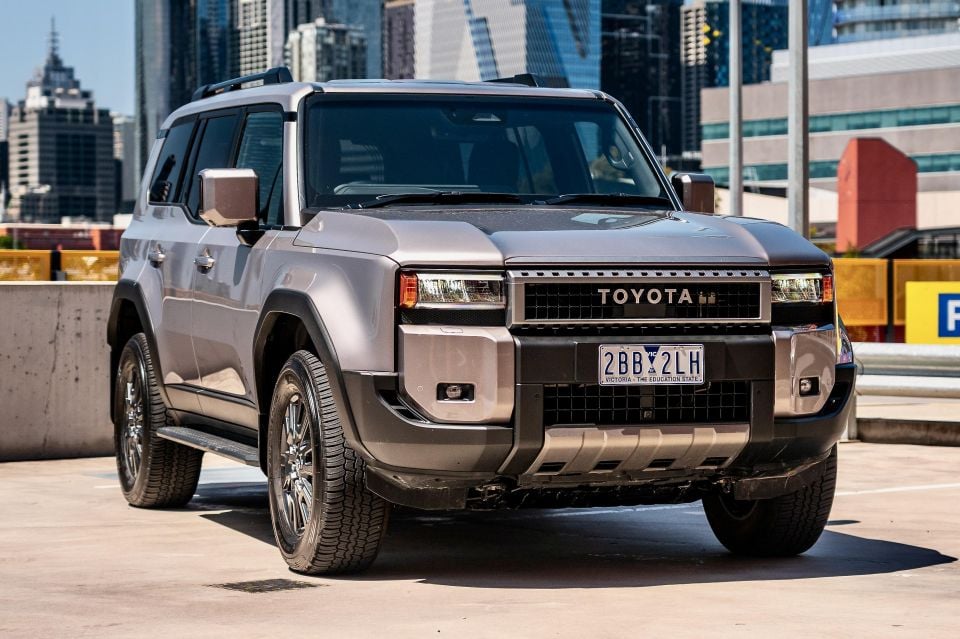


Quickly see how this car stacks up against its competition. Select any benchmark to see more details.
Where expert car reviews meet expert car buying – CarExpert gives you trusted advice, personalised service and real savings on your next new car.
It’s now been six months since Toyota’s long-awaited, fifth-generation 250 Series LandCruiser Prado replaced the top-selling, 15-year-old 150 Series, allowing enough time for the dust to settle.
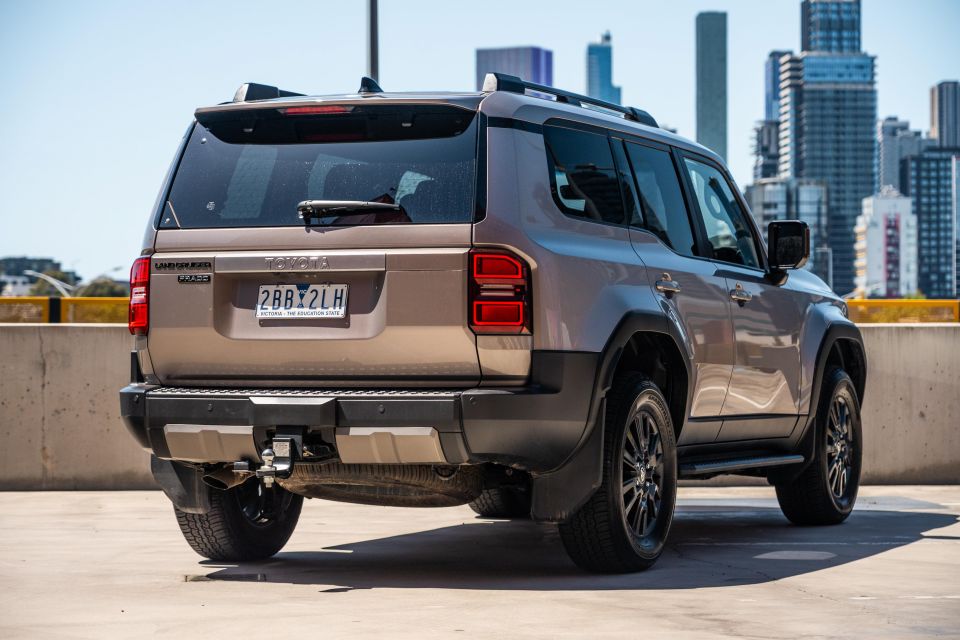
Despite early complaints about high prices and concerns that the gap to its more luxurious Lexus GX sibling was too small, the Prado has managed to cement itself as Toyota Australia’s third best selling model so far in 2025.
It’s behind only the omnipresent RAV4 mid-sizer SUV leader and the HiLux ute in the Japanese brand’s extensive local lineup. And after losing its long-held large SUV title to the Ford Everest during the model changeover last year, it has even out-sold its most direct rival in the first five months of this year, and is well ahead of the Isuzu MU-X.
The Prado has achieved that despite its lack of revolutionary gear under its angular sheetmetal, namely its engine. It’s fitted with the same electrified 2.8-litre four-cylinder turbo-diesel as found in the HiLux, which belongs to an engine family introduced in 2015.
With 48V mild-hybrid assistance, it’s the only engine available for the boxy off-road wagon in Australia. Overseas, it can be had with a handful of four-cylinder petrol powertrains, including a hybrid, while its Lexus counterpart gets a buttery 3.4-litre twin-turbo V6.
WATCH: Paul’s video review of the 2025 Toyota LandCruiser Prado Altitude
Still, the Prado is loaded with tech and equipment, even if some of the nicer gear like adaptive suspension isn’t available on the ‘Cruiser you see here.
On test is the seven-seat Toyota LandCruiser Prado GXL, a popular trim level and the second most affordable Prado variant currently on sale in Australia. It still isn’t cheap at a whopping $79,990 before on-road costs, though even the base GX will cost around $80,000 once it’s parked in your driveway.
The GXL grade in particular recently became a little more accessible with the addition of a five-seat option, bringing its starting price down by $1000. But it’s still considerably more expensive than the Everest and MU-X.
How does it stack up now the hype has died down?
The seven-seat Prado GXL is priced at $79,990 before on-road costs, while its five-seat alternative shaves off $1000.
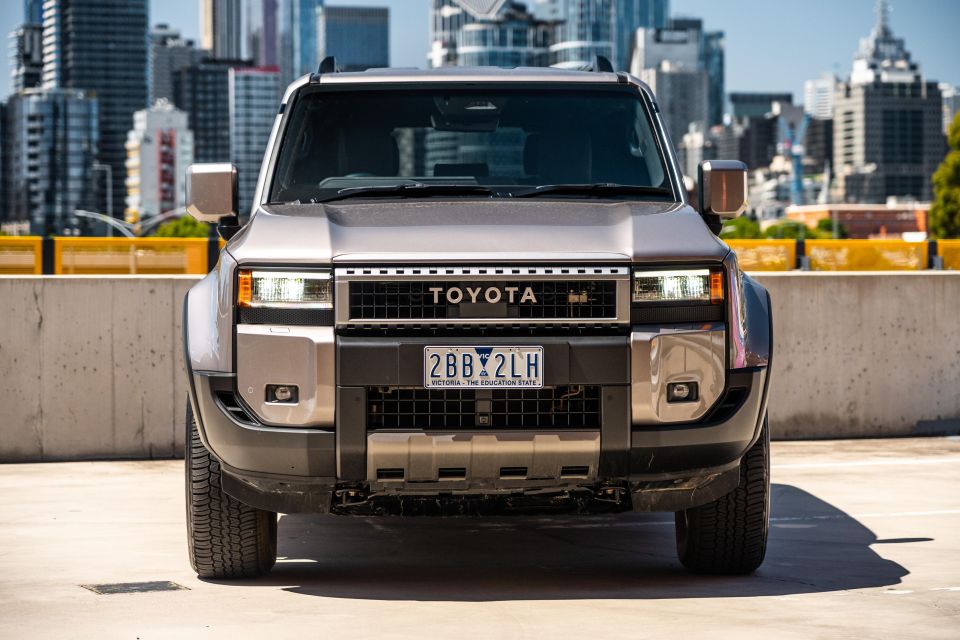
| Model | Price before on-road costs |
|---|---|
| 2025 Toyota LandCruiser Prado GX | $72,500 |
| 2025 Toyota LandCruiser Prado GXL | $79,990 |
| 2025 Toyota LandCruiser Prado VX | $87,400 |
| 2025 Toyota LandCruiser Prado Altitude | $92,700 |
| 2025 Toyota LandCruiser Prado Kakadu | $99,990 |
Its most direct mainstream rivals are the Everest and MU-X, both of which are also large, off-road capable ladder-frame SUVs. For the time being, both models are also available in cheaper rear-wheel drive guises, while the Prado is sold exclusively with four-wheel drive setup.
Everest 4×4 variants range in price from $59,240 to $81,200 before on-roads, though they become increasingly road-oriented as prices climb – bar the off-road-ready Tremor for $76,590 before on-roads.
The 4×4 MU-X lineup, meanwhile, ranges from $54,400 to $75,100 before on-roads, the latter applying to the beefed-up X-Terrain off-road flagship.
GWM’s hybrid Tank 500 may also be cross-shopped against the Prado, and it ranges in price from $66,490 to $73,990 drive-away. The Mitsubishi Pajero Sport, a historical Prado rival, was discontinued last year.
To see how the Toyota Prado stacks up against its rivals, use our comparison tool
Buy your new car without the stress. It's fast, simple and completely free.

Great service from Travis and team, second time I have used this business would not hesitate to recommend them to anyone
Craig C.
Purchased a Ford Ranger in Sunshine Coast, QLD
CarExpert helped Craig save $7,224 on his Ford Ranger, now let us save you on your next new car.
Get your BEST priceUtilitarian, but not as bare-bones as you might expect for a second-from-the-bottom model grade.
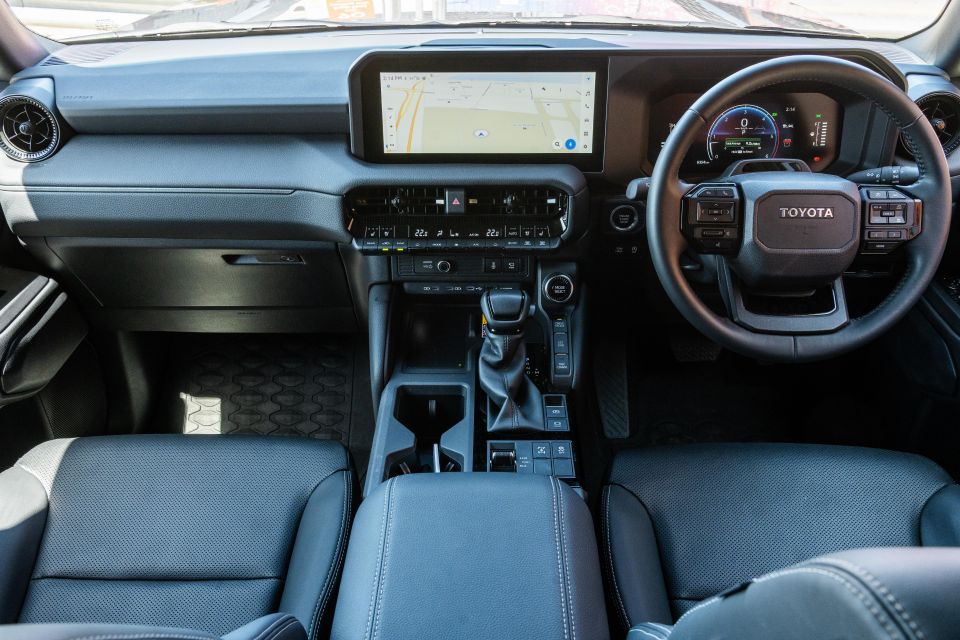
Though the additions to the GXL over the GX aren’t extensive, they’re quality-of-life enhancements that do wonders to elevate the cabin experience.
Gone is the cloth seat upholstery, which is now replaced with synthetic leather that looks and feels premium.
The leather-wrapped steering wheel and gear selector are also upgrades compared to the base GX, both of which are easy on the eyes if nothing else. It makes for a pleasant interior, and one that feels much nicer in reality than the photos would suggest.
The most important omission from the GXL is a 12.3-inch digital instrument cluster, which isn’t available until more expensive VX level. We still think the 7.0-inch partial-digital display is a good alternative, but not one that screams $80,000.

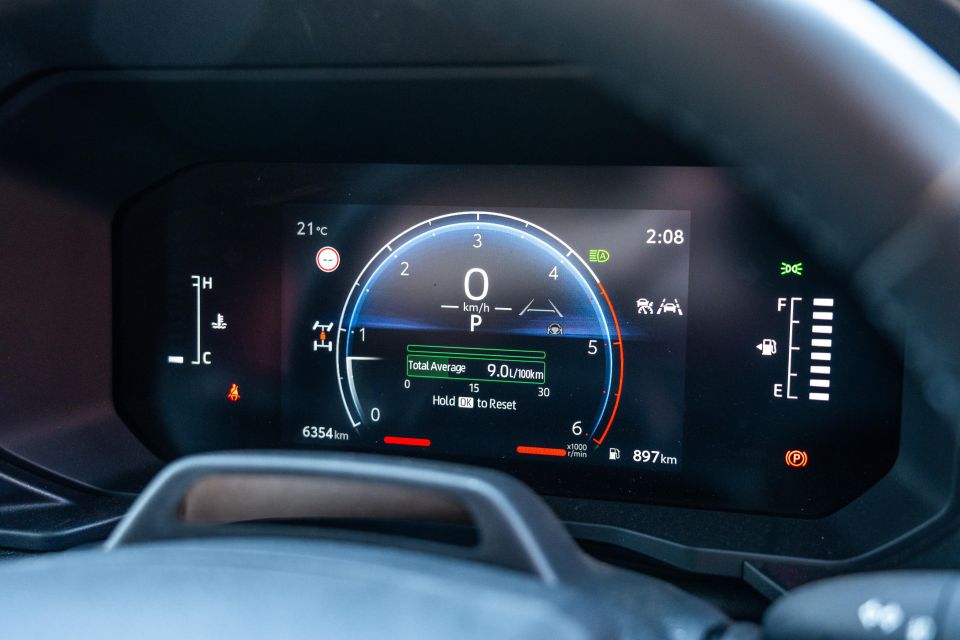
Here you’ll find basic trip information on a simple graphic design, which can be scrolled through using buttons on the left of the steering wheel. The screen is flanked by gauges for temperature and fuel level, and it’s generally a clean setup.
The bezelled plastic panel in which this display sits incorporates the 7.0-inch infotainment system. It looks identical to the screens you’ll find in most other new Toyotas, headlined by clean graphics and sharp resolution.
Down the right is a ribbon for basic app shortcuts, which is easy enough to navigate but can be fiddly on the move. Another missed item is the more premium 14-speaker JBL sound system, but the standard setup in the GXL gets the job done nicely.
You get wireless smartphone mirroring as standard, and while it can be considered reliable, Melbourne’s toll gantries would consistently cause it to drop out – this also affects other Toyota products.

There’s a physical climate interface below that comprises an array of buttons and switches. It’s sturdy and easy to work with on the move, but we don’t like the use of glossy black plastic for the upper buttons.
More glossy plastic is found on the wide centre console, which is broken up by dull plastic buttons and the large gear selector. This wide, boxy section of the cabin is dominated by squares and hard edges, but it ties in nicely with the way everything else looks.
All the buttons here are large and easy to find too, which helps if there’s a small adjustment to be made on the move. The only hiccup is that the multitude of buttons means there’s a lot to wrap your head around, though the clear labels help.
Nearby are also three USB-C ports, a wireless phone charger, HDMI port, and two cupholders.
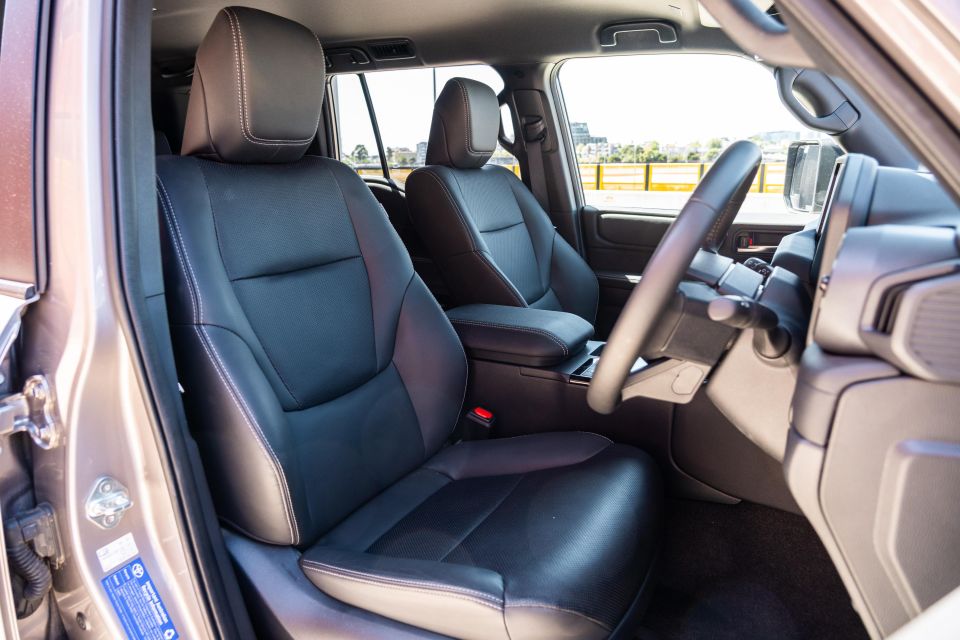
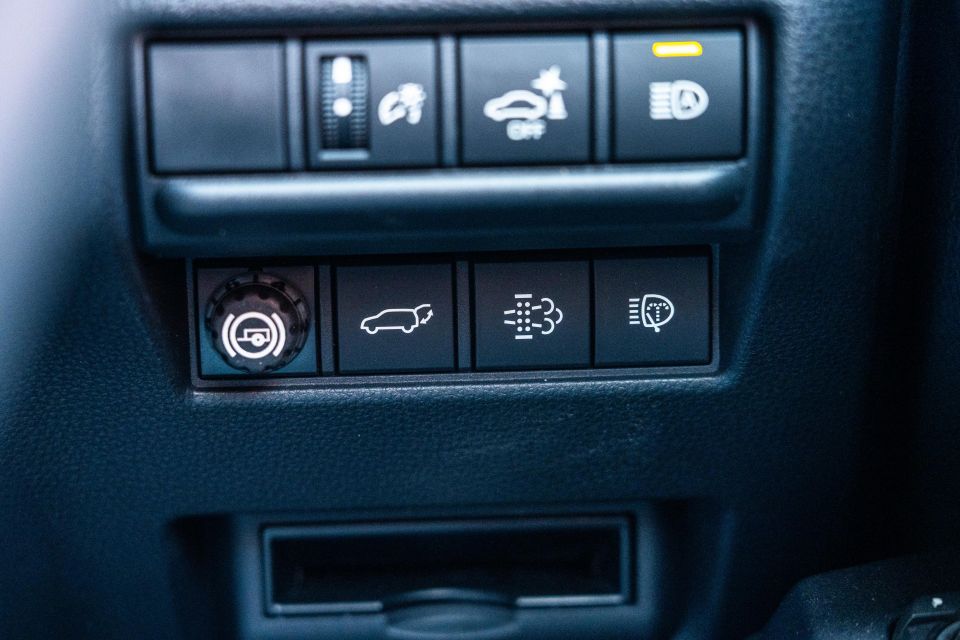
It all makes for a practical space – which won’t become cramped when loaded with passengers and loose items – not to mention luxe with the addition of the centre console cold box.
You’ll find more hardy buttons on and around the steering wheel, and the level of control provided is impressive. We also appreciate that none of these buttons are touch-sensitive, which means they should stand the test of time.
The utilitarian look doesn’t mean the GXL is uncomfortable inside, either. Its seats are plush and offer a good range of powered adjustment on the driver’s side, while the leather-clad steering wheel feels nice in the hands, and the main touch points are welly padded.
Not only that, but there’s also plenty of space all around thanks to the Prado’s boxy stature. Though it’s tall, the sturdy side steps and interior A-pillar grab handles make it easier to pull yourself into.
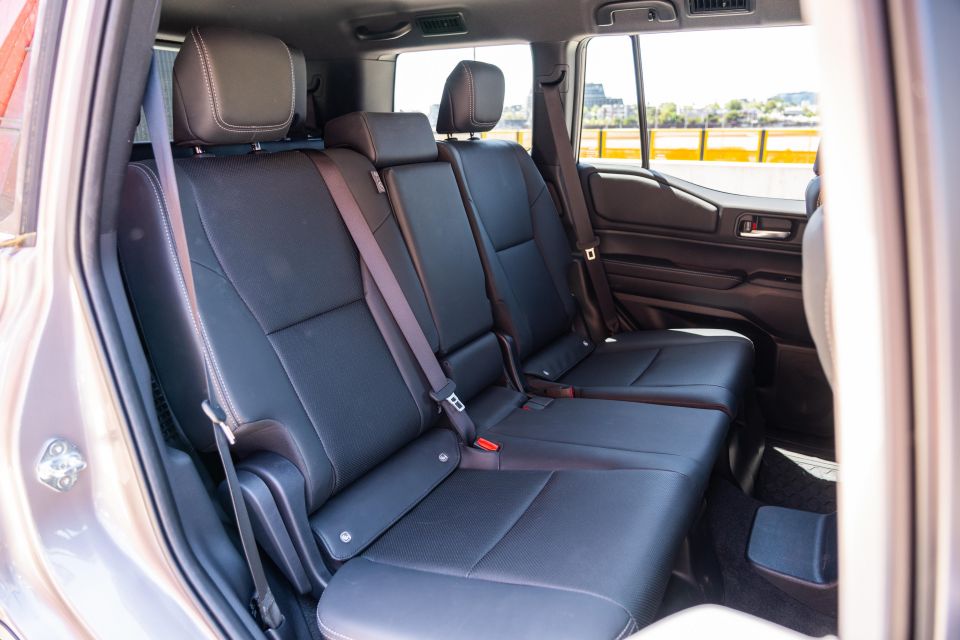

There are also handles on the B-pillars, which help to get into the second row. It’s a similar story here as it is up front, with a handful of features added over the base GX that make it a nicer place to spend time.
Leather upholstery is one, while you get some reclining adjustment thanks to the folding mechanism fitted for third-row access. There’s also a dedicated second-row climate control interface, with pared-back buttons to adjust a few basic functions – air is then fed through roof-mounted vents.
The seats themselves are fairly flat and don’t provide world-class support, which is something that becomes painfully apparent on long drives. They’ll be fine for commuting and school runs, though.
It’s a similar story for the third row, just with much less legroom. Headroom is good for both rear rows, while both third-row seats have dedicated USB-C ports, cupholders, and a small central storage tray.
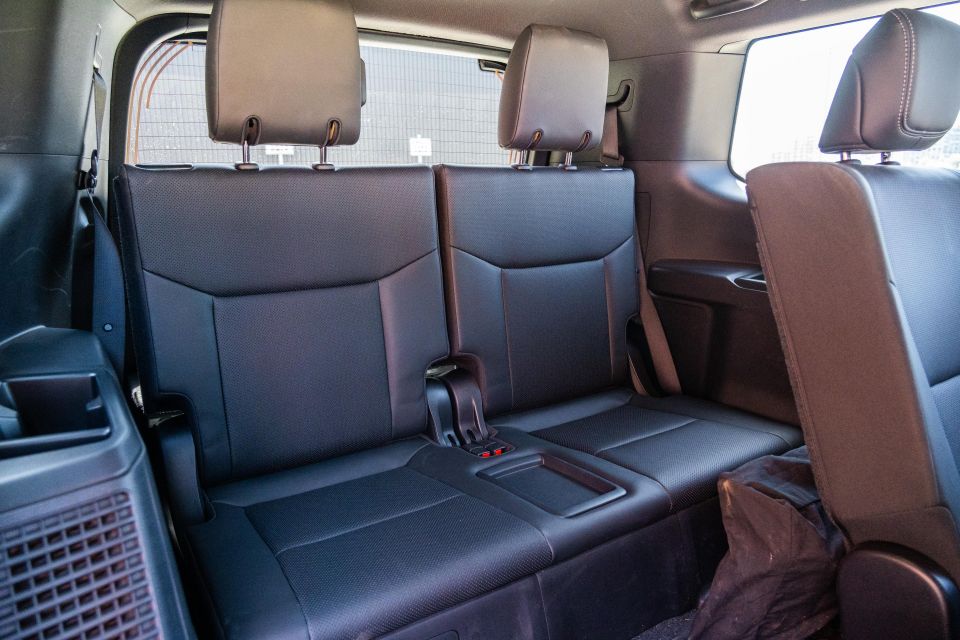
Of course, boot space is almost non-existent with the third row ready for use, but the boot was already compromised to begin with. Bluntly, this remains the worst part of the Prado’s cabin.
In this seven-seat model, the third row sits atop the boot floor instead of being integrated into it – due to the mild-hybrid battery and the spare wheel being placed under the floor instead of on the tailgate. There’s then an awkward plastic box at the back of the load floor to create a flat load floor, but it sits way too high above the boot floor.
Additionally and annoyingly, neither the tow bar’s hard carry case nor the body-coloured tow hitch cover fits in this plastic container, despite being supplied with the car. There are also large nooks around the seats and a container for things to fall into, and the cargo box can’t support much weight on top.
You at least get a powered tailgate with the GXL, but the compromised boot packaging still feels like a glaring oversight – especially compared to an Everest.
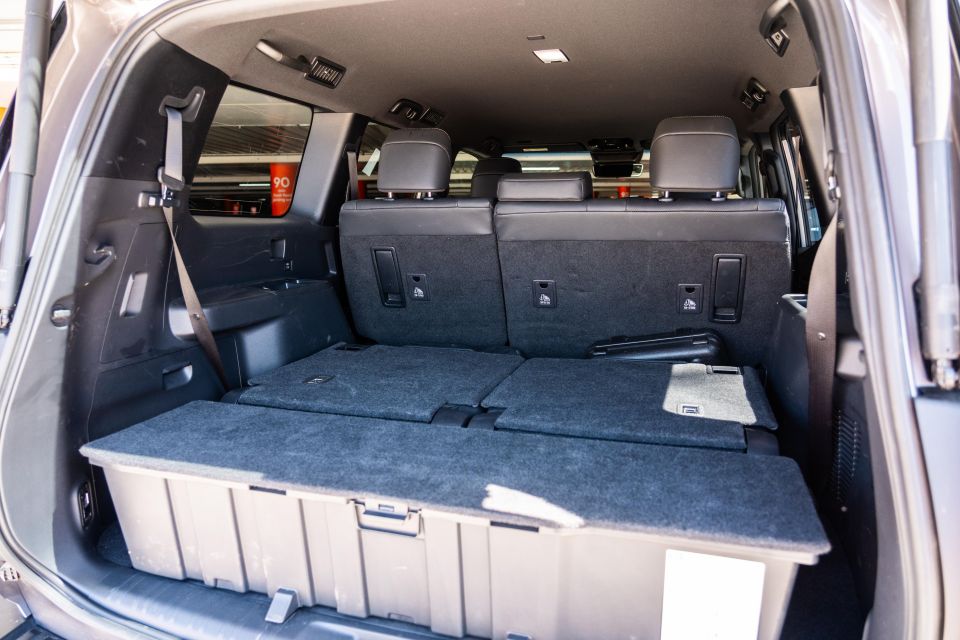
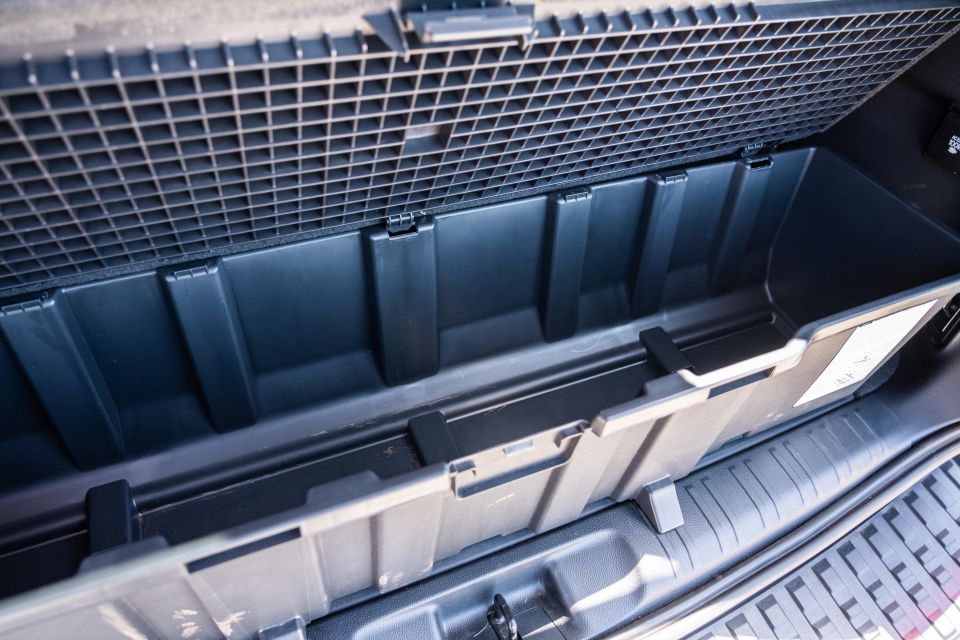
| Dimensions | Toyota Prado |
|---|---|
| Length | 4990mm |
| Width | 1980mm |
| Height | 1925mm |
| Wheelbase | 2850mm |
| Cargo capacity | 182L (all seats up) 906L (third row folded) 1829L (third and second rows folded) |
To see how the Toyota Prado stacks up against its rivals, use our comparison tool
All Prados are powered by a 2.8-litre four-cylinder turbo-diesel that’s largely the same as what you get in the HiLux, Fortuner, HiAce and LandCruiser 70 Series, albeit with the addition of V-Active mild-hybrid technology across the range. It also gets an eight-speed automatic transmission instead of a six-speed auto.
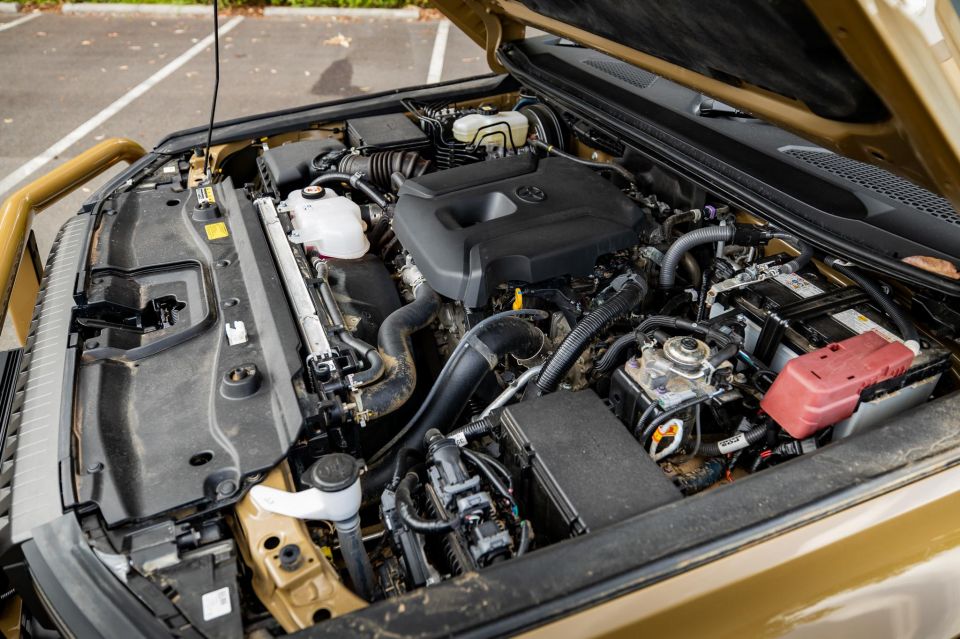
| Specifications | Toyota Prado |
|---|---|
| Engine | 2.8L 4cyl turbo-diesel with 48V MHEV |
| Battery | 4.3Ah li-ion |
| Motor generator power | 8.4kW |
| Motor generator torque | 65Nm |
| Total system power | 150kW @ 3000-3400rpm |
| Total system torque | 500Nm @ 1600-2800rpm |
| Transmission | 8-speed automatic |
| Drive type | Full-time 4WD |
| Fuel economy (claimed) | 7.6L/100km |
| Fuel economy (as tested) | 9.0L/100km |
| CO2 emissions (claimed) | 200g/km |
| Fuel tank | 80L main tank 30L sub tank 17.4L AdBlue |
| Kerb weight | 2535kg |
| Payload | 615kg |
| Braked towing capacity | 3500kg |
| Gross vehicle mass (GVM) | 3150kg |
| Gross combination mass (GCM) | 6600kg |
Our week with the car generally involved long-distance cruising, along with freeway commuting. The latter involved several stints in traffic which, when combined with moments of harder acceleration, contributed to our slightly higher fuel economy. Like the Everest, the Prado requires AdBlue exhaust fluid.
To see how the Toyota Prado stacks up against its rivals, use our comparison tool
This is where the GXL’s ‘base-spec’ leanings become clearer, as it lacks a layer of polish.
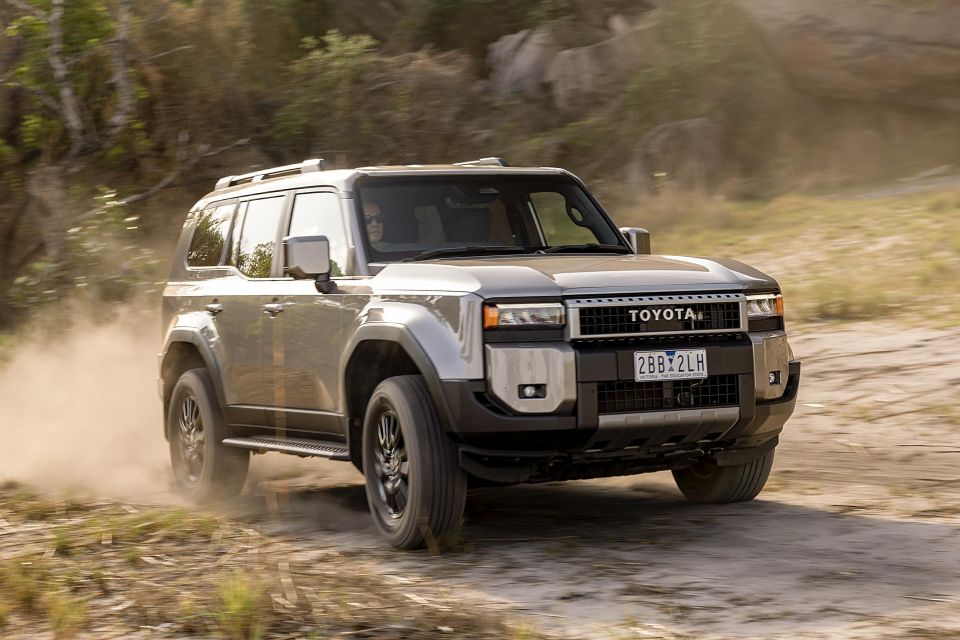
The diesel engine under the bonnet is a big part of this, as it was with the old Prado, because it doesn’t do the Prado any favours in terms of luxury or refinement, but you at least get strong torque figures and proven durability.
The trade-off is performance and efficiency. The Prado isn’t fast, and forcing it to move quickly will have it chugging through fuel.
Yes, the Prado now has a mild-hybrid system, but it’s about as mild as it gets. You won’t notice any electric power assistance on the move, only really when the engine turns off and on at standstill.
It’s the same as what you get in a V-Active HiLux, which doesn’t scream refinement and isn’t as smooth as the Everest’s biturbo-diesel four or optional V6 diesel (or the 300 Series LandCruiser’s oil-burning V6). Still, it’s more efficient than before, works a bit better with the extra transmission ratios, and does a competent job whether you’re driving in the suburbs, towing or on a long-distance trip.
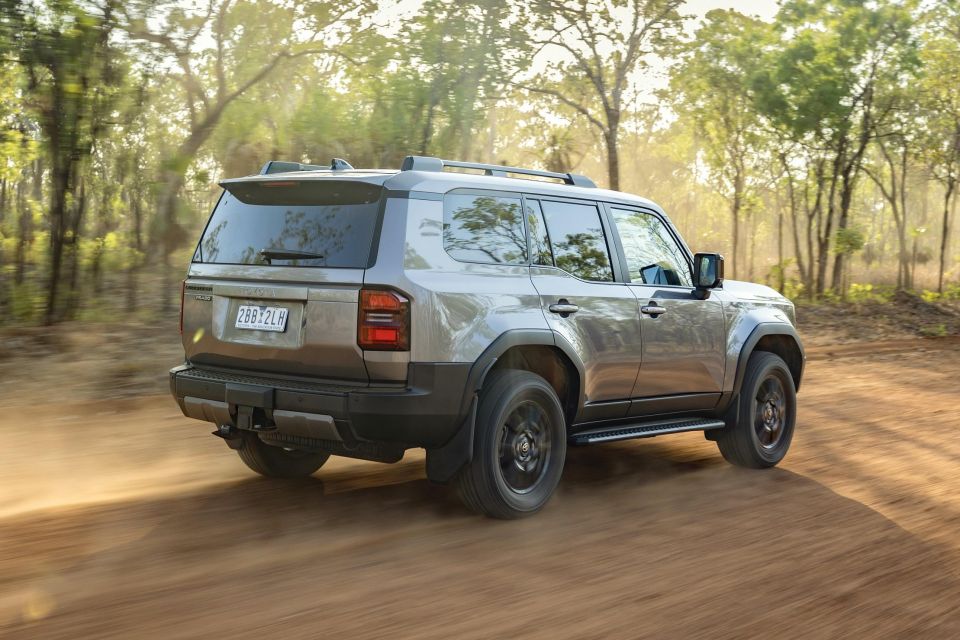
While the old Prado was renowned for its ride comfort (for a ladder-frame vehicle), we also find the new model’s suspension setup to be harsh on the road. It doesn’t seem to soak up bumps in the way we’d like, instead exhibiting a bouncy ride a bit like a ute.
Of course, the Prado is still a body-on-frame vehicle, but there’s a drastic difference between the GXL’s chassis setup and the Adaptive Variable Suspension damping system fitted to the Prado VX and up, which feel more like an Everest. It’s particularly uncomfortable on rough rural roads, and passengers in the back will suffer the worst of it.
We expect this to improve with a trailer attached, a fully loaded boot, or both. But ride comfort, or the lack thereof, is what reminds you that the GXL isn’t a premium variant and, like the smaller instrument display, it isn’t befitting of a large SUV that costs more than $80,000 on the road.
There are benefits to the firmer ride, though. One is that it should better handle an increased load over the rear axle, like a trailer, without upsetting the balance of the car as much.

Where expert car reviews meet expert car buying – CarExpert gives you trusted advice, personalised service and real savings on your next new car.
Another is that it’s surprisingly comfortable once the blacktop ends. Unlike on the bitumen, the Prado GXL somehow soaks up small bumps on unsealed roads with confidence.
And given it now shares the same TNGA-F ladder frame and a similar footprint to the LandCruiser 300 Series, the new Prado brings an uptick in stability and road holding, both off-road and on.
You also have decent ground clearance to work with, so reaching those remote campsites without damaging the vehicle or its contents should be easy, and larger obstacles and holes won’t cause problems.
If the going gets tougher, you also have the advantage of off-road drive modes, low-range gearing, and an electronic locking centre differential, all of which work as they should. A surround-view camera makes it easy to place and park the Prado, too.
The GXL lacks the locking rear differential, surround-view camera, and front sway bar disconnect function fitted to more expensive variants, but it still has plenty of off-road hardware to keep you moving on all but the steepest of hill climbs.
For a more detailed overview of the Prado’s off-road capabilities, check out our video review
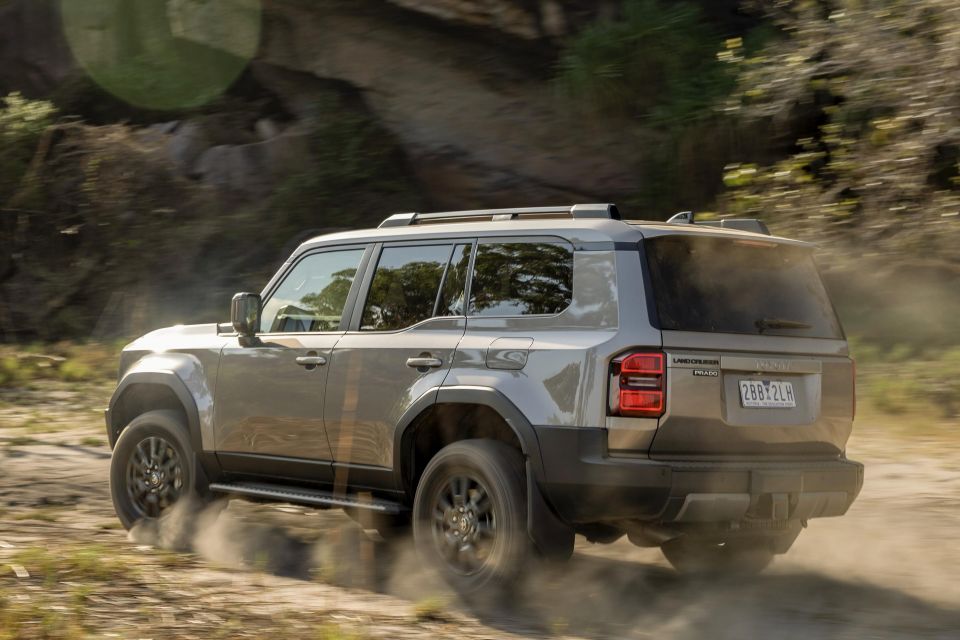
Both on road and off, the Prado is an easy car to drive. Power delivery is smooth and consistent, and the eight-speed automatic works well in most use cases.
The steering is direct and while it has a solid feel, it becomes heavier when you engage sport mode. Like the old Prado, you will notice some body roll around turns, but the car doesn’t feel unwieldy in the same way a lot of large SUVs can – likely a byproduct of its suspension tune.
The Prado is also equipped with a comprehensive suite of safety gear, even from the bottom of the range. These systems are all reliable, including the adaptive cruise control and lane-centring functions that follow lanes and adapt to traffic.
It’s reluctant to apply more aggressive steering lock though, which means it’ll likely ask you to take over when travelling on windy rural highways, and none of the safety gear is too intrusive.
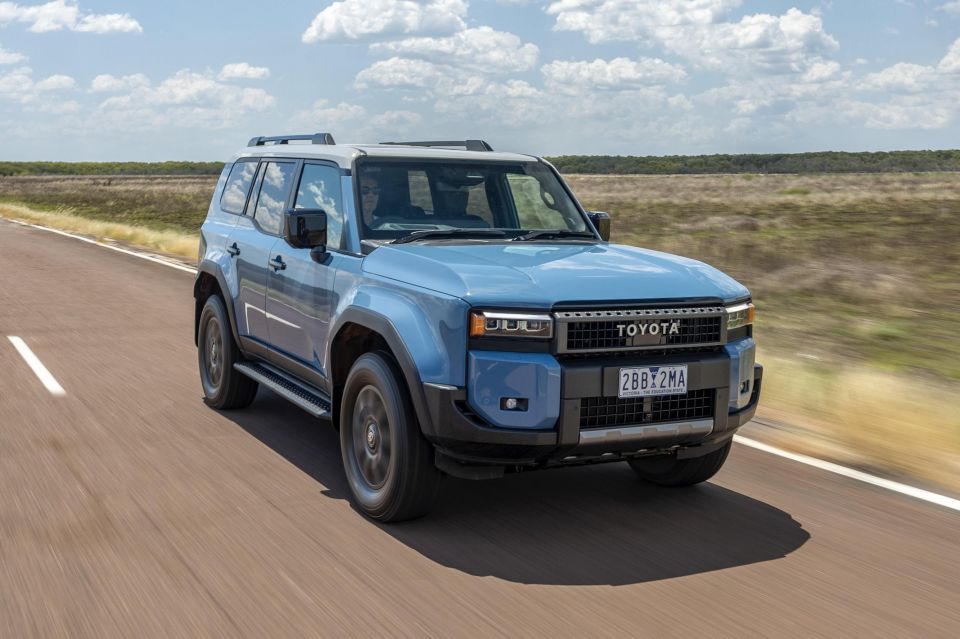
Visibility out of the cabin is good, though it’ll take a moment to get used to the vertical side mirrors if you’re coming from a more traditional SUV.
One thing that annoys us is the Prado’s requirement of AdBlue, which is housed in a 17.4-litre tank and needs to be refilled every 8000km on average. It’s the first time a Toyota has needed AdBlue in Australia, and it’s inconvenient that refilling the tank isn’t a service item.
It isn’t necessarily inconvenient to refill the AdBlue at a service station, but it’s a significant switch-up for people coming from older Prados. Like other Toyotas with this engine, it also conducts frequent diesel particulate filter (DPF) burn-offs while on the road.
These are only small hold-ups in the grand scheme of things, and overall the GXL provides a decent driving experience. We’d just rather a Prado with adaptive suspension, which is the only real factor that detracts from an otherwise well-behaved vehicle.
| Off-road dimensions | Toyota Prado GXL |
|---|---|
| Track front and rear | 1664mm front 1668mm rear |
| Ground clearance | 210mm |
| Approach angle | 31º |
| Departure angle | 17º |
| Ramp breakover angle | 25º |
| Wading depth | 700mm |
To see how the Toyota Prado stacks up against its rivals, use our comparison tool
Toyota offers five trim levels for the Prado in Australia, and the GXL is second from the bottom.
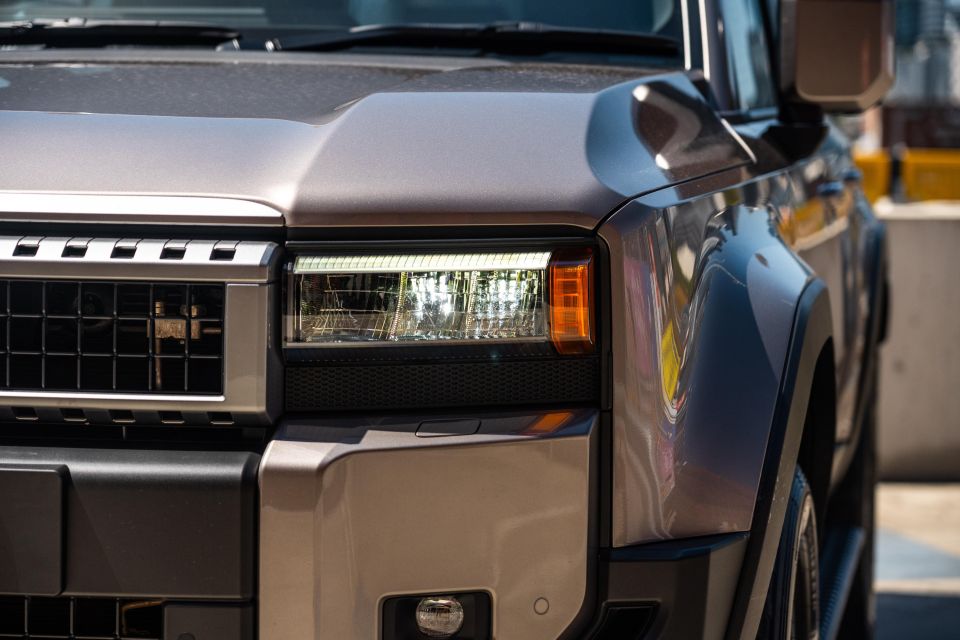

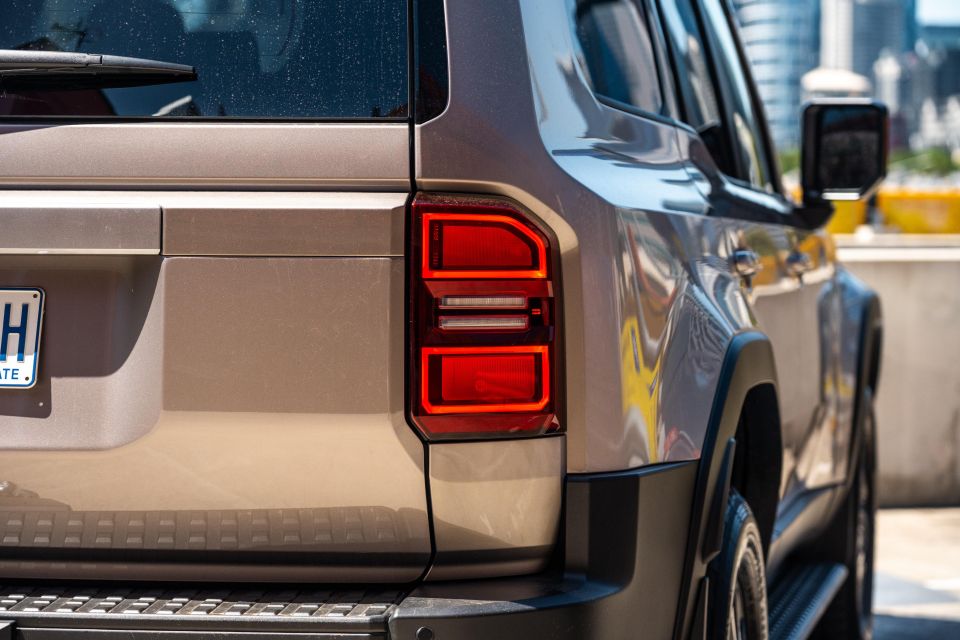

2025 Toyota LandCruiser Prado GX equipment highlights:
Prado GXL adds:
Prado VX adds:
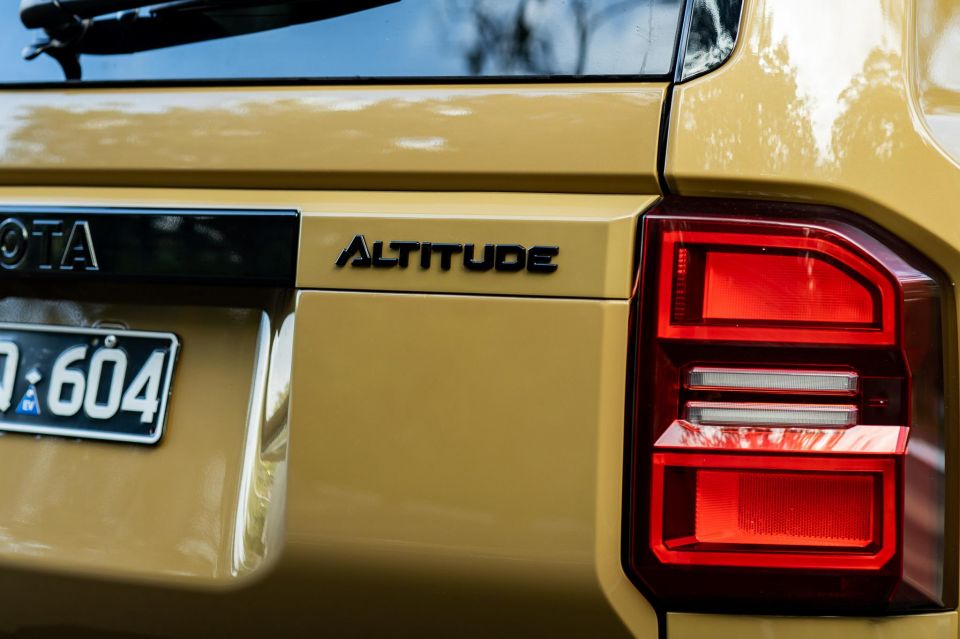
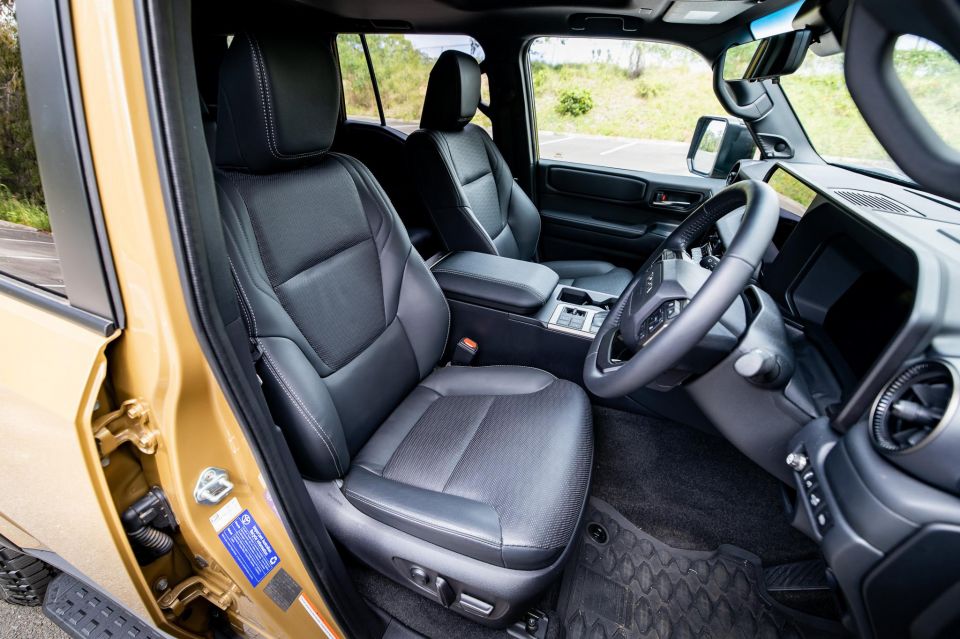

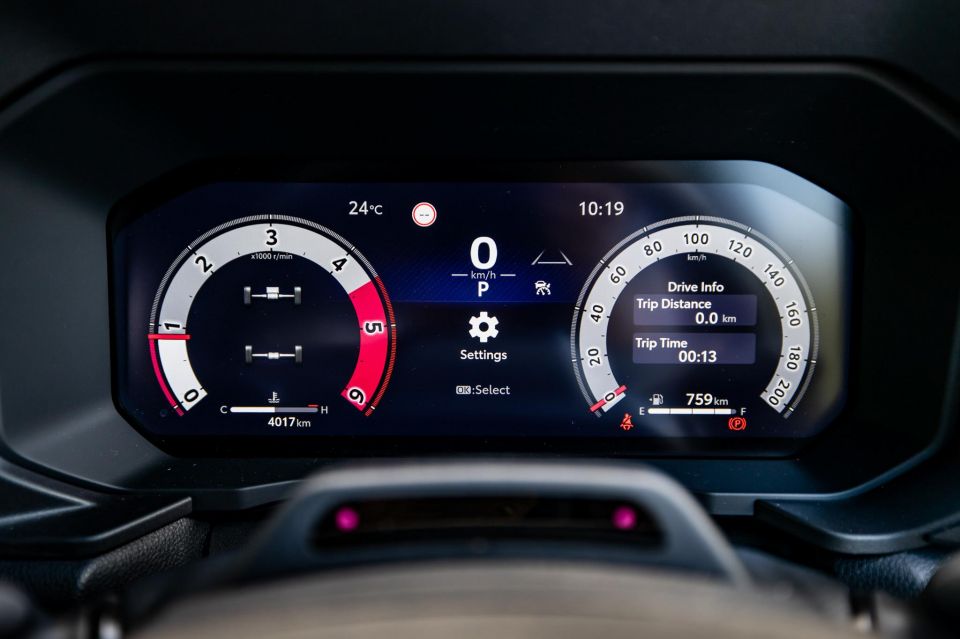
Prado Altitude adds:
Prado Kakadu adds:
To see how the Toyota Prado stacks up against its rivals, use our comparison tool
The 2025 Toyota LandCruiser Prado has a five-star ANCAP safety rating based on testing conducted by ANCAP in 2024.
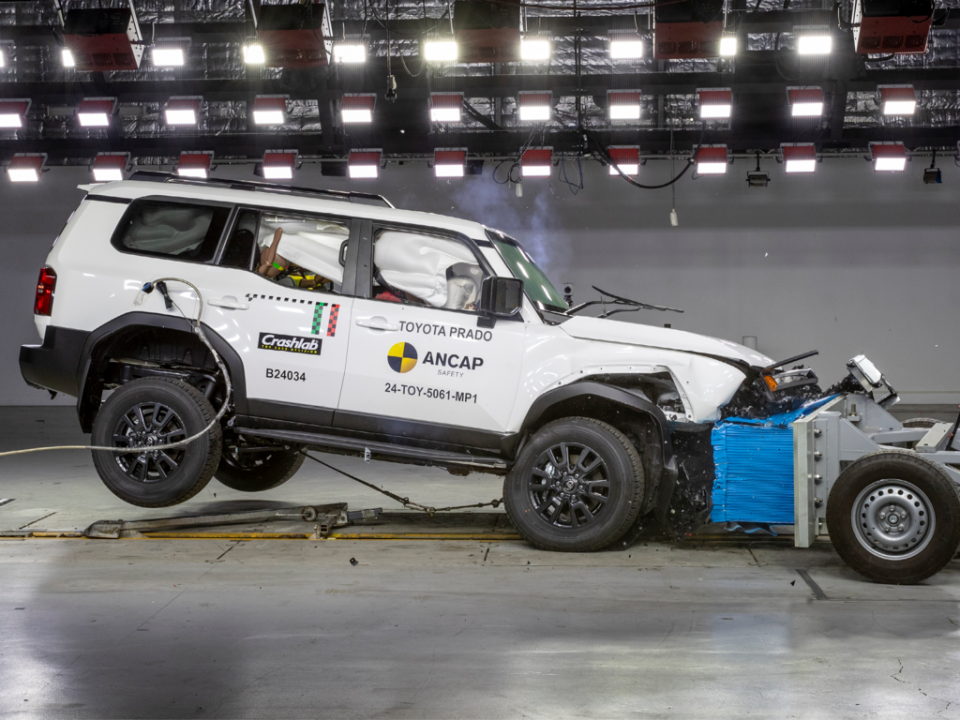
| Category | Toyota Prado |
|---|---|
| Adult occupant protection | 85 per cent |
| Child occupant protection | 89 per cent |
| Vulnerable road user protection | 84 per cent |
| Safety assist | 82 per cent |
Safety equipment highlights:
The VX, Altitude, and Kakadu grades gain tyre pressure monitoring.
To see how the Toyota Prado stacks up against its rivals, use our comparison tool
Toyota Australia backs its cars with a five-year, unlimited-kilometre warranty. Servicing for the Prado is required every six months or 10,000km (whichever comes first), which is more often than all of its rivals.

| Servicing and Warranty | Toyota Prado |
|---|---|
| Warranty | 5 years, unlimited kilometres |
| Roadside assistance | Purchasable, $99 or $139 per year, depending on plan |
| Service intervals | 6 months or 10,000km |
| Capped-price servicing | 3 years, $390 each |
| Total capped-price service cost | $2340 |
For context, the Ford Everest and Isuzu D-Max both require servicing every 12 months or 15,000km, while the GWM Tank 500 is due every 12 months or 10,000km.
To see how the Toyota Prado stacks up against its rivals, use our comparison tool
Buy your new car without the stress. It's fast, simple and completely free.

Great service from Travis and team, second time I have used this business would not hesitate to recommend them to anyone
Craig C.
Purchased a Ford Ranger in Sunshine Coast, QLD
CarExpert helped Craig save $7,224 on his Ford Ranger, now let us save you on your next new car.
Get your BEST priceThe latest iteration of the Prado is a generally strong offering, but there are a few hiccups that detract from the nameplate’s reputation.

There are quite a few positives, namely in its tough styling, durable engine, and rock-solid Toyota build quality. There’s plenty of space in all three rows, which is appropriate for a family vehicle that’s intended to be capable of long-distance mass transport.
It’s also decent off-road, even if this GXL grade misses out on a handful of off-road systems reserved for higher-spec grades. Its interior is lightyears ahead of the old Prado and the GXL offers a meaningful upgrade over the GX too, punching well above its position in the Prado pecking order.
But its diesel engine is still gruff and lacks the grunt for a vehicle this size and weight, and the ride on its standard suspension is too ute-like for our tastes. As the engine is the same across the range, the suspension is the only thing holding the GXL back on-road – leading us to recommend the VX instead.
Then there’s the boot situation, which is as unappealing, inconvenient and feels like an uncharacteristic afterthought by Toyota. Unfortunately, this is something ingrained into the J250 Prado’s DNA, and its more luxurious Lexus GX sister model does better with the same packaging limitations, although it’s not perfect either.
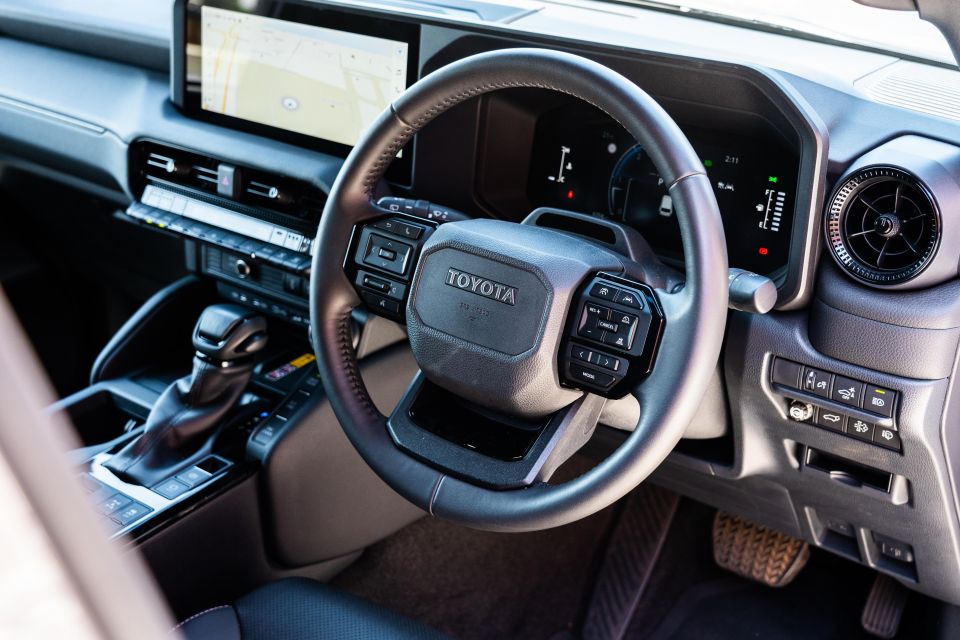
The Prado has short service intervals and isn’t cheap either, and we don’t think the GXL does enough to justify its price position. VX pricing makes a bit more sense, but there’s no getting around the fact the Prado is generally an expensive vehicle.
Yes, it feels more premium than the Everest and MU-X, but those vehicles are much better-rounded packages despite being cheaper.
At the end of the day, it’s hard to argue with the 13,406 people who bought a new Prado to the end of May this year. In the same period, Ford has managed 9589 Everest deliveries and Isuzu has shifted 5785 examples of its MU-X – making the Prado the clear favourite among Aussies shopping in this segment once again.
There’s no doubt the higher-spec Prados get the job done better because they tick more of the chassis hardware boxes, although they have the same compromised packaging, so it remains to be seen whether the GXL continues to be the most popular Prado in the range.
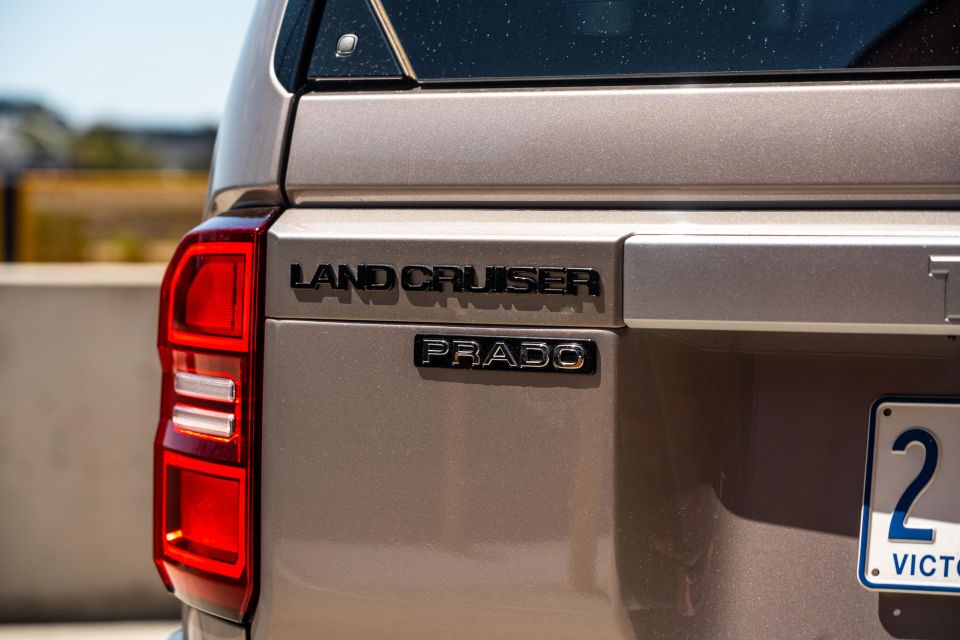
Interested in buying a Toyota Prado? Let CarExpert find you the best deal here
Click the images for the full gallery
Where expert car reviews meet expert car buying – CarExpert gives you trusted advice, personalised service and real savings on your next new car.
Max Davies is a CarExpert journalist with a background in regional media, with a passion for Japanese brands and motorsport.


William Stopford
2 Hours Ago
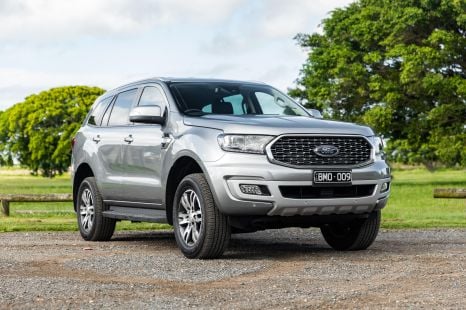

William Stopford
2 Days Ago


James Wong
5 Days Ago


Derek Fung
9 Days Ago
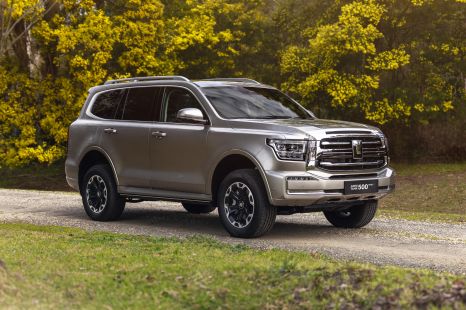

William Stopford
11 Days Ago


William Stopford
17 Days Ago